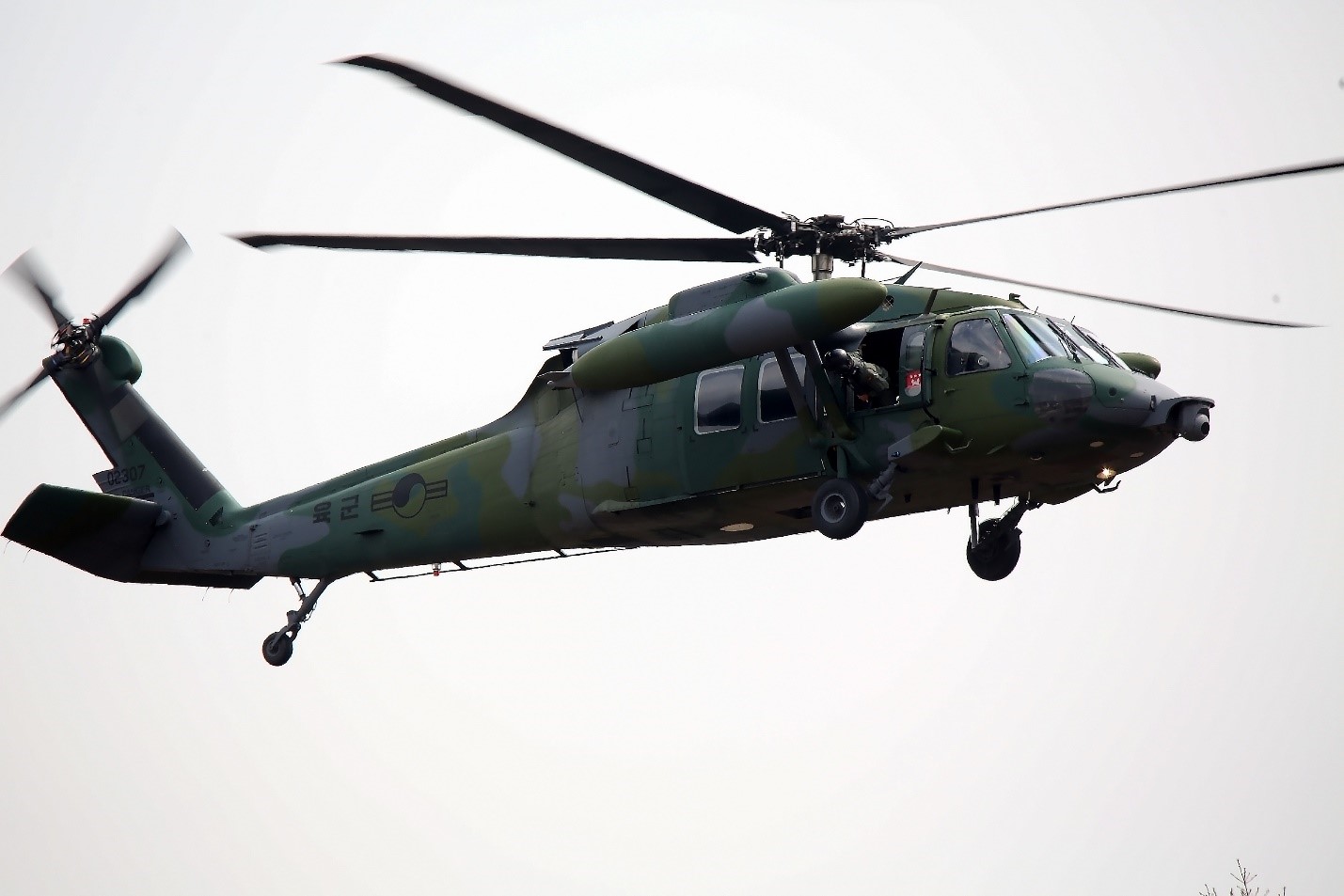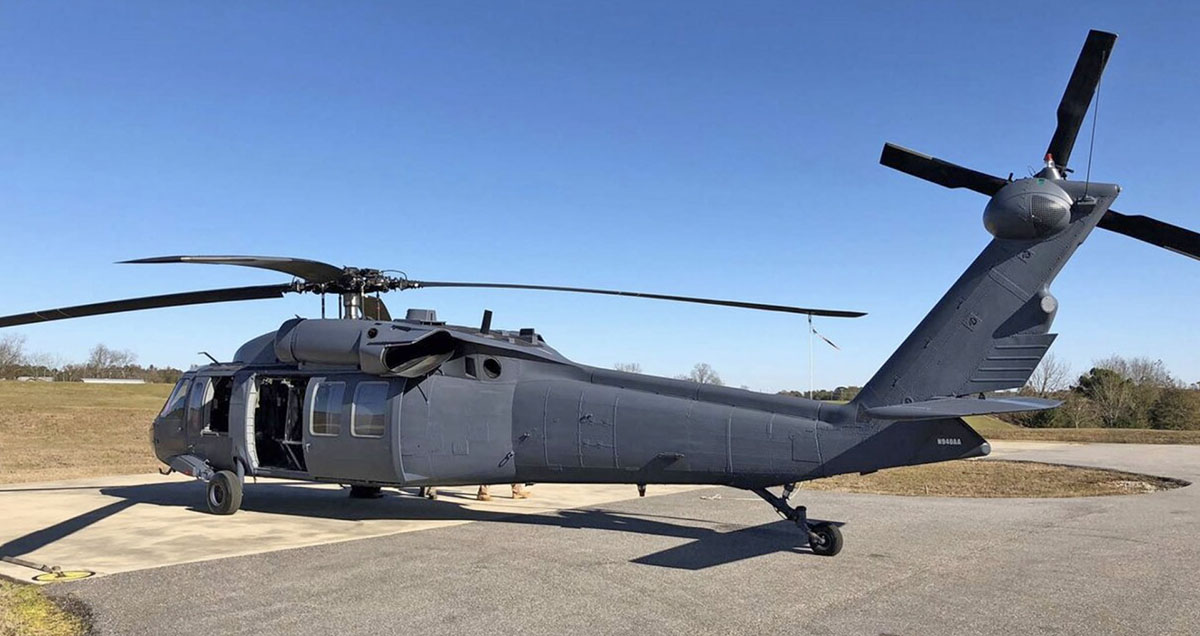Every Little Thing You Need to Learn About the UH 60 Helicopter
The UH-60 helicopter, a keystone of U.S. Military air travel because its debut in 1979, represents an amazing blend of engineering and functional flexibility. Recognized for its exceptional rate and range, the UH-60 has actually been adjusted for different goals, from troop transportation to medical emptying. As army requirements advance, so as well does the helicopter, with recurring improvements targeted at improving its capacities and integrating contemporary innovations. To fully value the significance of the UH-60 in contemporary army operations, one must consider its background, layout, and the future developments that might redefine its duty.
History of the UH-60
Created in the late 1970s, the UH-60 Black Hawk helicopter arised as a reaction to the U.S. Military's demand for a functional energy helicopter that could perform a variety of objectives under difficult problems. The catalyst for its layout was the shortcomings identified in the earlier helicopters used during the Vietnam War, particularly in terms of maneuverability, rate, and survivability.
The Black Hawk was made by Sikorsky Airplane, including innovative modern technologies and products to improve its efficiency and longevity. It was formally presented right into solution in 1979, promptly coming to be a crucial property for army procedures - uh 60. Its capability to deliver troops, clinical emptying, and logistical assistance in both battle and altruistic goals made the Black Hawk a very useful part of the U.S. Military's air travel fleet
Throughout the decades, the UH-60 has been continually updated, adapting to the changing nature of war and the advancing demands of contemporary military operations. Its functional history includes engagement in significant disputes, peacekeeping objectives, and disaster alleviation initiatives, strengthening its online reputation as a reliable and reputable helicopter in different settings worldwide.

Style and Specs
The layout of the UH-60 Black Hawk helicopter constantly mirrors a dedication to operational performance and versatility. Developed by Sikorsky Aircraft, this medium-lift energy helicopter features a streamlined, aerodynamic body that boosts speed and ability to move. Its tandem blades system, defined by two counter-rotating blades, minimizes resonance and enhances lift capacity, enabling safer procedures in diverse atmospheres.
The UH-60 is powered by 2 T700-GE-701C turboshaft engines, providing a maximum rate of about 180 knots and a series of around 400 maritime miles. Its durable airframe is built from sophisticated composite products, guaranteeing longevity while maintaining a relatively low weight. The helicopter has a maximum gross weight of regarding 22,000 extra pounds, sustaining a functional haul arrangement.

Missions and functions
A functional platform, the UH-60 Black Hawk helicopter serves a plethora of roles and objectives within army operations. Made primarily for army transportation, it is capable of lugging approximately 11 soldiers, making it an essential property for quick deployment and logistical support.
Along with army transport, the UH-60 masters medical evacuation (MEDEVAC) missions, geared up with sophisticated clinical tools to provide vital treatment throughout transportation. Its capacity to run in diverse environments improves its efficiency in battle search and rescue (CSAR) procedures, where speedy removal of employees is essential.
The helicopter also plays a significant function in reconnaissance and monitoring objectives, using onboard sensors and devices to gather intelligence. Its flexibility prolongs to logistical support, capable of transporting supplies and tools to onward running bases.
In battle operations, the UH-60 can be outfitted with numerous tool systems, enabling it to offer close air support. Its multi-role capacity makes the Black Hawk an essential tool for modern-day army forces, adapting effortlessly to the progressing needs of battleground scenarios and ensuring goal success throughout a variety of operational contexts.
Efficiency and Capabilities
Recognized for its durable performance, the UH-60 Black Hawk helicopter flaunts excellent abilities that enhance its functional effectiveness across numerous missions. uh 60. This multi-role airplane is geared up with effective twin-engine Turbomeca Arriel 1D1 engines, supplying extraordinary speed and ability to move, with a maximum cruise ship speed of about 150 knots and an operational array of around 400 nautical miles
The Black Hawk's innovative avionics and fly-by-wire control systems substantially improve flight safety and handling, enabling it to run in diverse settings, including negative weather conditions. Its convenience is additional exemplified by its ability to lug up to 11 completely equipped troops or a haul of approximately 8,000 pounds, making it excellent for troop transportation, clinical evacuation, and logistical assistance goals.
Additionally, the UH-60 is created for survivability, including strengthened airframes, ballistic protection for team and guests, and advanced countermeasure systems to avert threats. The helicopter's dexterity and rate, incorporated with its capacity for Web Site fast release, make it an important property in modern-day army operations, guaranteeing that it continues to be a crucial element of tactical air support and field of battle flexibility.
Future Developments

One considerable emphasis is the combination of advanced avionics systems, which will certainly improve situational recognition with enhanced navigating and communication capacities. This includes the possible use fabricated intelligence to aid pilots in decision-making and objective preparation.
Additionally, future variants may include sophisticated products and design functions to bolster the helicopter's longevity and minimize its radar signature, improving survivability in disputed environments.
The intro of hybrid-electric propulsion systems is also imminent, intending to boost fuel performance and reduce logistical burdens. Such developments could extend functional range and lower the helicopter's ecological impact.

Conclusion
The UH-60 helicopter stands for a significant advancement in army aviation given that its introduction in 1979. The UH-60's enduring helpful hints visibility underscores its crucial duty in straight from the source contemporary armed forces procedures and highlights the ongoing development of army aviation innovation.
The UH-60 helicopter, a keystone of U.S. Army air travel given that its debut in 1979, represents an impressive blend of design and functional flexibility. As armed forces demands evolve, so too does the helicopter, with continuous innovations aimed at improving its abilities and incorporating modern technologies.The design of the UH-60 Black Hawk helicopter constantly reflects a commitment to operational effectiveness and versatility. Established by Sikorsky Aircraft, this medium-lift energy helicopter includes a smooth, wind resistant body that improves rate and ability to move.The UH-60 helicopter stands for a considerable innovation in army aeronautics since its intro in 1979.